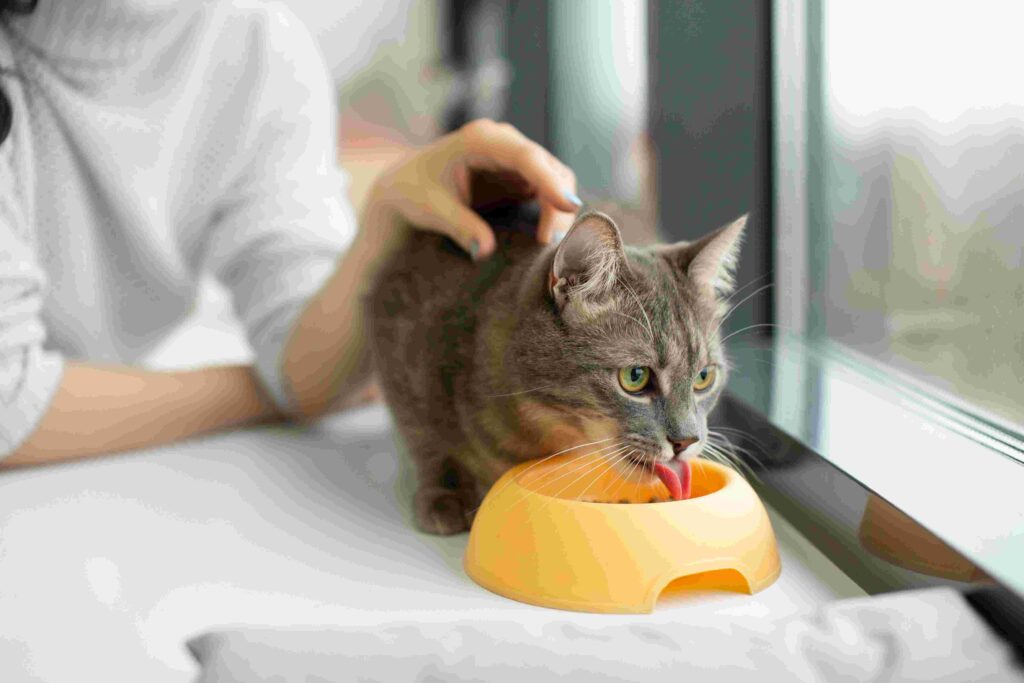
Training cats might not be as straightforward as training dogs, but it is far from impossible. With patience, consistency, and the right techniques, you can teach your feline friend a variety of behaviors, from basic commands to litter box training. This comprehensive guide will delve into the essentials of cat training, including practical tips, common challenges, and answers to frequently asked questions.
Understanding Cat Training
1. Why Train a Cat?
Training your cat can have several benefits:
- Behavioral Improvement:
Address issues such as scratching furniture, jumping on counters, or not using the litter box.
- Strengthened Bond:
Engaging in training can deepen your connection with your cat.
- Enhanced Safety:
Teach your cat commands to ensure their safety, such as coming when called or avoiding dangerous areas.
2. The Feline Mindset
Cats are independent animals with distinct characteristics that affect training:
- Curiosity:
Cats are naturally curious and may respond well to training that involves exploration or play.
- Short Attention Span:
Cats have shorter attention spans compared to dogs. Training sessions should be brief and frequent to keep them engaged.
- Positive Reinforcement:
Unlike dogs, cats respond better to positive reinforcement, such as treats or praise, rather than punishment.
Basic Training Techniques
1. Litter Box Training
Litter box training is usually straightforward for kittens but might require additional guidance for adult cats:
- Choose the Right Box:
Opt for a litter box that is large enough for your cat to enter and exit comfortably. Low sides are helpful for easy access, especially for kittens or older cats.
- Select the Right Litter:
Use unscented, clumping litter. Some cats have preferences for certain types of litter, so you might need to experiment to find what your cat likes best.
- Optimal Location:
Place the litter box in a quiet, low-traffic area. Avoid locations near food and water bowls, as cats prefer their bathroom area to be separate.
- Maintain Cleanliness:
Scoop the litter box daily and change the litter regularly to prevent odor and maintain hygiene.
- Positive Reinforcement:
Praise your cat or give a treat immediately after they use the litter box correctly. This helps them associate the litter box with positive experiences.
2. Teaching Commands
Teaching basic commands to your cat can be both fun and beneficial:
- Come:
Start by calling your cat’s name and offering a treat. Gradually increase the distance between you and your cat, rewarding them when they come to you. Consistency is key, so practice this command regularly.
- Sit:
Hold a treat above your cat’s head and move it slowly towards their tail. As your cat sits to follow the treat, reward them. Repeat this process until your cat sits on command.
- High Five:
Gently tap your cat’s paw and reward them. Continue this process until your cat lifts their paw on command. Patience is crucial, as some cats may take longer to learn this trick.
3. Scratch Training
Scratching is a natural behavior for cats and proper training can redirect this behavior to appropriate outlets:
- Provide Scratching Posts:
Install scratching posts or pads in areas where your cat likes to scratch. Vertical and horizontal posts are both useful.
- Use Catnip:
Apply catnip to the scratching post to make it more enticing. This can help attract your cat and encourage them to use the post.
- Discourage Furniture Scratching:
Apply deterrent sprays to furniture and reward your cat when they use the scratching post. Consider using double-sided tape on furniture as an additional deterrent.

Advanced Training Techniques
1. Clicker Training
Clicker training involves using a small device that makes a clicking sound to mark desired behavior:
- Introduce the Clicker:
Start by associating the clicker sound with a treat. Click and then immediately give a treat to help your cat make the connection between the sound and the reward.
- Mark the Behavior:
Click at the exact moment your cat performs the desired behavior, and follow up with a treat. This helps your cat understand which behavior is being rewarded.
- Build Up:
Once your cat is responding well to basic commands, gradually introduce more complex behaviors. Maintain the use of the clicker and treats to reinforce learning.
2. Trick Training
Teaching tricks can provide mental stimulation and strengthen your bond with your cat:
- Roll Over:
Begin with your cat in a lying position. Use a treat to guide their movement, gently rolling them over. Reward them when they complete the trick. Repeat the process until your cat performs the trick on command.
- Fetch:
Use a toy that your cat finds engaging. Throw the toy and reward your cat when they bring it back. Practice regularly to reinforce the behavior.
Dealing with Common Challenges
1. Stubbornness
Cats can be stubborn and might resist training efforts:
- Stay Patient:
Patience and consistency are crucial. Avoid frustration and continue practicing regularly.
- Adjust Techniques:
If a particular method isn’t working, try adjusting your approach or altering the training session’s duration to better suit your cat’s preferences.
2. Fear and Anxiety
Some cats may be fearful or anxious during training:
- Create a Safe Environment:
Ensure that the training area is calm and free from distractions. This can help reduce anxiety and make training sessions more effective.
- Go Slow:
Take your time and use gentle methods to build your cat’s confidence. Gradually introduce new commands or behaviors at a pace that suits your cat.
3. Overcoming Setbacks
Setbacks are a normal part of training:
- Revisit Basics:
If your cat seems to forget previously learned commands, return to basic training exercises. Reinforce the foundation before progressing to more complex behaviors.
- Maintain Consistency:
Regular practice helps reinforce learned behaviors. Consistency in training sessions will support long-term success.
Conclusion
Training your cat can be a deeply rewarding experience, both for you and your feline companion. While cats are known for their independent nature, they are also capable of learning and adapting to new behaviors with the right approach. By employing patience, consistency, and positive reinforcement, you can teach your cat a variety of useful and entertaining commands. Understanding and respecting your cat’s natural behaviors and preferences is crucial to successful training.
Remember that each cat is unique, and what works for one may not work for another. Tailoring your training approach to fit your cat’s personality will yield the best results. As you embark on the journey of cat training, keep in mind that setbacks and challenges are part of the process. Stay patient and persistent, and celebrate small victories along the way. The bond you build through training will strengthen your relationship and enhance your cat’s well-being.
FAQs
A: Training duration varies based on the cat’s age, temperament, and the complexity of the behavior being taught. Some cats may learn new commands within a few days, while others might take weeks or even months. Consistent, short training sessions generally yield better results.
A: Yes, older cats can be trained. While they might take longer to learn new behaviors compared to younger cats or kittens, the training principles remain the same. Patience and positive reinforcement are key.
A: If your cat isn’t responding, ensure that you are using positive reinforcement effectively. Reevaluate your training methods and consider whether your cat might be experiencing stress or health issues that could be affecting their behavior.





Pingback: Tips for Training Your Russian Blue Cat
Pingback: How to Recognize the Signs of Cat Chirping
Pingback: 10 Tips for Choosing the Right Cat Cage for Balcony
Pingback: How to Train a Blue Maine Coon Cat?
Pingback: The Unique Beauty of Torbie Cats
Pingback: Everything You Need to Know About Cat Collar
Pingback: How to Train Your Cat: A Step-by-Step Guide - Pet Parent Playbook